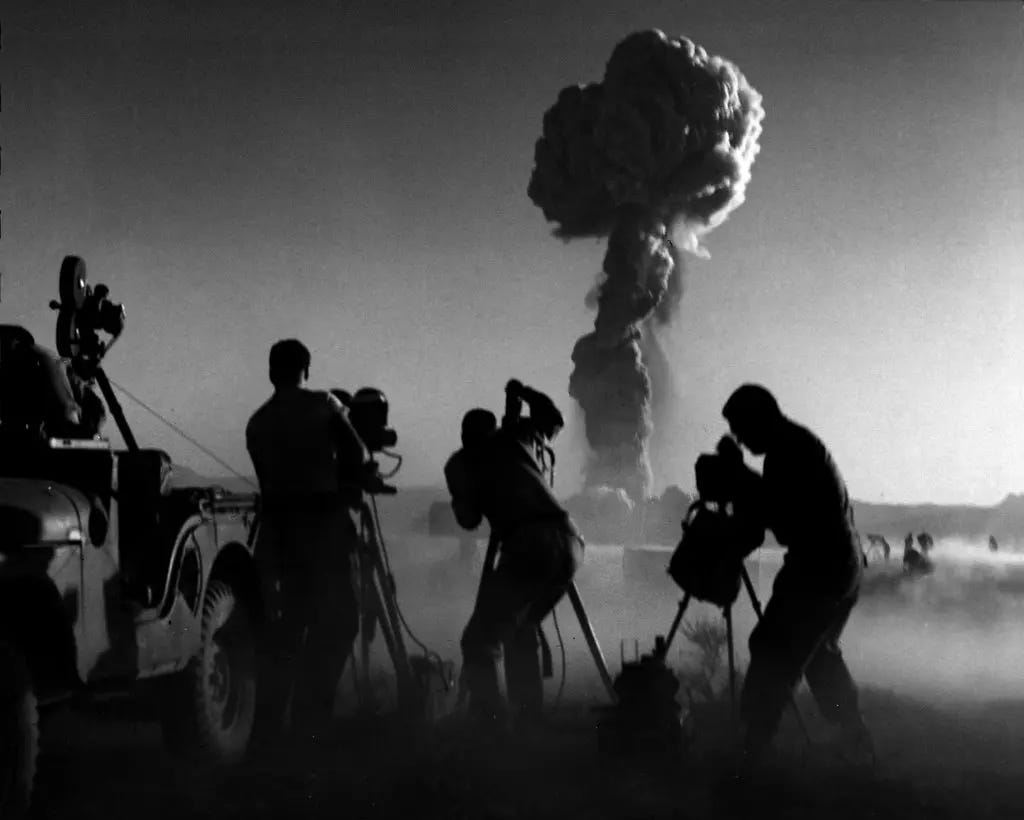The power of matter properly arranged
> A creature that can do anything. Make a machine. And a machine to make the machine. And evil that can run itself a thousand years, no need to tend it.
Nations are not powerful because they possess wide lands, safe ports, large navies, huge armies, fortifications, stores, money, and credit. They acquire those advantages because they are powerful, having devised on correct principles the political structure which allows the flow of energy to take its proper course.
The ontology of modern existence depends not on factories or force but our communications infrastructure.1 This determining substructure is not simply the means of production, as mistaken by Marx, but rather the means of reproducing reality; it is the way the world comes to be. Now, a brief history of the world.
We can note an early stage in which this was entirely material, that is, totally dependent upon the organic environment. Then there comes time, whereby the world is displaced along a fourth dimension. This dimension is not material but ideal, yet it still comes to structure our existence. While to some extent this structuring tends to reflect long-term material cycles, there is also an increasing abstraction; it is the difference between a harvest festival and Christmas sales.
This process was accelerated by human access to fossil fuels. While prior we were dependent on the sum of sunlight in a given duration, now we had access also to the stored light of dead time. This led us to mining the light from deep time. The new factor was not time but efficiency, hence we broke away and led to an increasing abstraction insofar as technique provided for an unheard of access to energy.2
The world thus created took a further step with the introduction of programmable matter. This begins not with computers but the written word, and here the essential inventions were paper and printing press. These created a world within which man could represent freely, hence the imaginative leaps which followed. Engineering design is an unspoken foe in the fall of man. The information structures and habits thereby generated gave birth to a paper universe.
This paper universe leaps finally into the digital, where we are today; a topic which seems difficult to touch—perhaps it is still too close. The same structure underlies this as that prior, but now the whole is reprogrammable matter which is able to operate on itself. The signal has been detached from the structure of information, hence the world is represented foremost as abstractions. The whole is cryptographic in this sense, yet now not for secrecy but efficiency.
We find here the true material substructure of the modern world, that it is a paper universe which we have superimposed over existence; one which has become increasingly detached from that existence. Our material umbilicus, however, remains ineluctably that with which we began: energy. This is the essence of our age, a relationship between energy and information: the power of matter properly arranged.3
We may note, moreover, that as terms communication and transportation were synonymous prior to the telegraph—whence the increasing abstraction of signals from information.
This is why energy prices matter; it is literally power.
Paterson: “The question is how; for the generator and the possible transmission lines and available outlets to either benefit or destruction are always the same. The only difference between past and present in respect of energy is quantitative, a higher potential available at a higher flow, which makes a wrong hook-up more appalling in its effect by the given ratio, becoming apparent literally in a world explosion. The principles of the conversion of energy and of its appropriate mechanism for human use cannot change; these are universals.”



